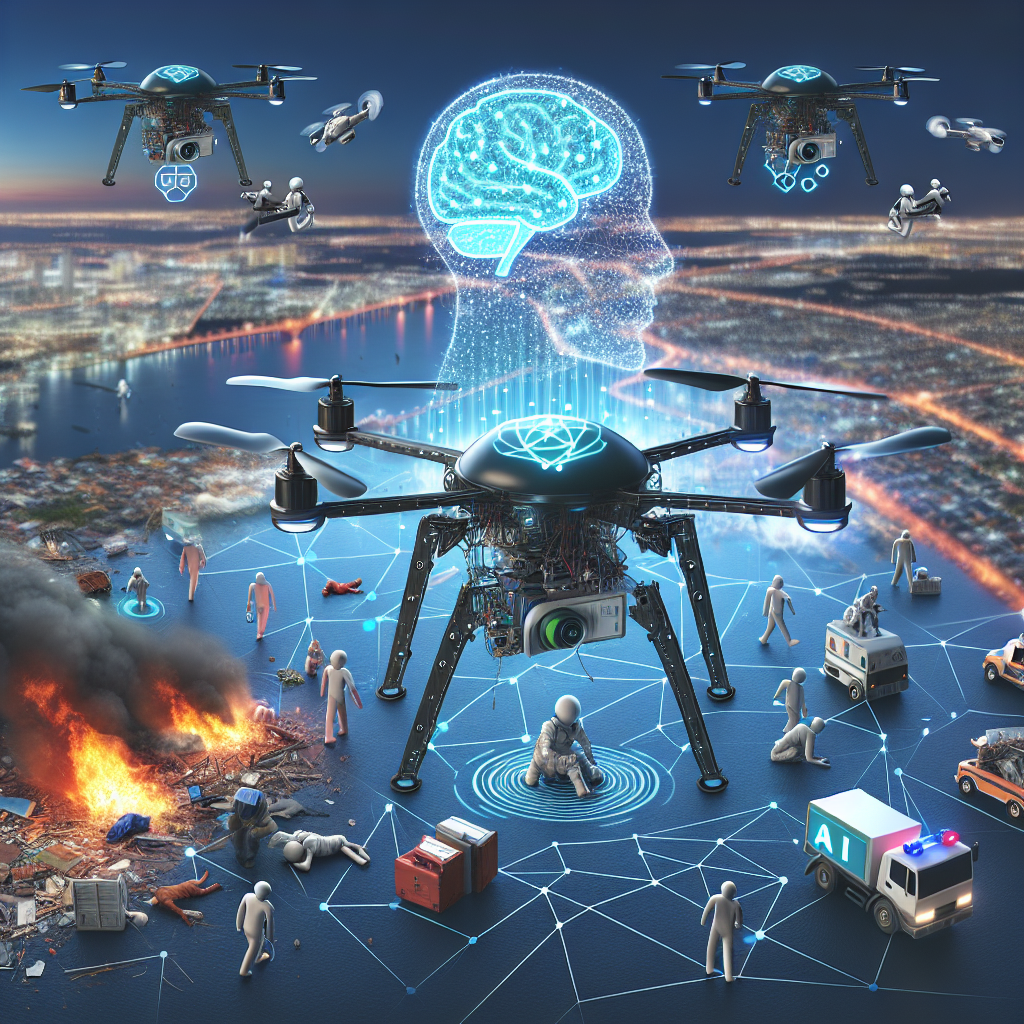The Potential of AI and Machine Learning in Disaster Response
In recent years, the world has seen an increase in the frequency and intensity of natural disasters such as hurricanes, wildfires, earthquakes, and tsunamis. These disasters have devastating effects on communities, causing loss of life, destruction of property, and disruption of essential services.
In the face of such disasters, the use of artificial intelligence (AI) and machine learning (ML) technologies has emerged as a promising solution to improve disaster response efforts. These technologies have the potential to enhance the speed, accuracy, and efficiency of disaster response operations, ultimately saving lives and reducing the impact of disasters on communities.
One area where AI and ML can make a significant impact is in early warning systems. By analyzing data from sensors, satellites, and other sources, AI algorithms can detect patterns and trends that indicate the likelihood of a disaster occurring. This early warning can give authorities and emergency responders valuable time to prepare and evacuate at-risk areas, reducing the risk of loss of life and property damage.
Another important application of AI and ML in disaster response is in predictive modeling. By analyzing historical data on past disasters, AI algorithms can predict the potential impact of future disasters, such as the path of a hurricane or the spread of a wildfire. This information can help authorities allocate resources more effectively and make informed decisions about evacuation orders and emergency response strategies.
AI and ML can also be used to optimize resource allocation during disaster response operations. By analyzing real-time data on the location of emergency responders, the availability of supplies, and the needs of affected communities, AI algorithms can help coordinate the deployment of resources more efficiently. This can help ensure that critical supplies such as food, water, and medical supplies reach those in need in a timely manner.
Furthermore, AI and ML can be used to analyze social media and other sources of information to identify areas of need during a disaster. By monitoring social media posts, news reports, and other sources, AI algorithms can quickly identify areas that are experiencing shortages of supplies, power outages, or other issues that require immediate attention. This information can help authorities prioritize their response efforts and ensure that resources are directed where they are most needed.
In addition to improving the efficiency of disaster response operations, AI and ML can also help enhance the safety and effectiveness of emergency responders. By analyzing data from drones, robots, and other autonomous systems, AI algorithms can help guide search and rescue operations, identify hazards, and provide real-time information to responders in the field. This can help reduce the risk to responders and improve the chances of locating and rescuing survivors.
Despite the potential benefits of AI and ML in disaster response, there are also challenges and limitations to consider. For example, AI algorithms rely on data to make predictions and decisions, and the quality of the data can impact the accuracy of the results. Inaccurate or incomplete data can lead to incorrect predictions and decisions, which can have serious consequences during a disaster.
Another challenge is the need for collaboration and coordination among different stakeholders in the disaster response ecosystem. AI and ML technologies require input and support from government agencies, emergency responders, non-profit organizations, and other partners to be effective. Building partnerships and sharing data and resources can be a complex process that requires time, effort, and commitment from all parties involved.
Furthermore, there are ethical and privacy considerations to take into account when using AI and ML in disaster response. For example, the use of AI algorithms to analyze social media data raises concerns about privacy and data security. It is important to ensure that the use of AI and ML technologies complies with ethical guidelines and safeguards the rights and privacy of individuals affected by disasters.
In conclusion, the potential of AI and ML in disaster response is significant and promising. These technologies have the ability to improve the speed, accuracy, and efficiency of disaster response operations, ultimately saving lives and reducing the impact of disasters on communities. By leveraging the power of AI and ML, we can enhance the capabilities of emergency responders, optimize resource allocation, and improve the safety and effectiveness of response efforts. However, challenges such as data quality, collaboration, and ethical considerations must be addressed to realize the full potential of AI and ML in disaster response.
FAQs
Q: How can AI and ML improve early warning systems for natural disasters?
A: AI algorithms can analyze data from sensors, satellites, and other sources to detect patterns and trends that indicate the likelihood of a disaster occurring. This early warning can give authorities and emergency responders valuable time to prepare and evacuate at-risk areas.
Q: How can AI and ML help optimize resource allocation during disaster response operations?
A: By analyzing real-time data on the location of emergency responders, the availability of supplies, and the needs of affected communities, AI algorithms can help coordinate the deployment of resources more efficiently. This can help ensure that critical supplies reach those in need in a timely manner.
Q: What are some of the challenges and limitations of using AI and ML in disaster response?
A: Challenges include the reliance on data for predictions and decisions, the need for collaboration among stakeholders, and ethical and privacy considerations. It is important to address these challenges to realize the full potential of AI and ML in disaster response.

